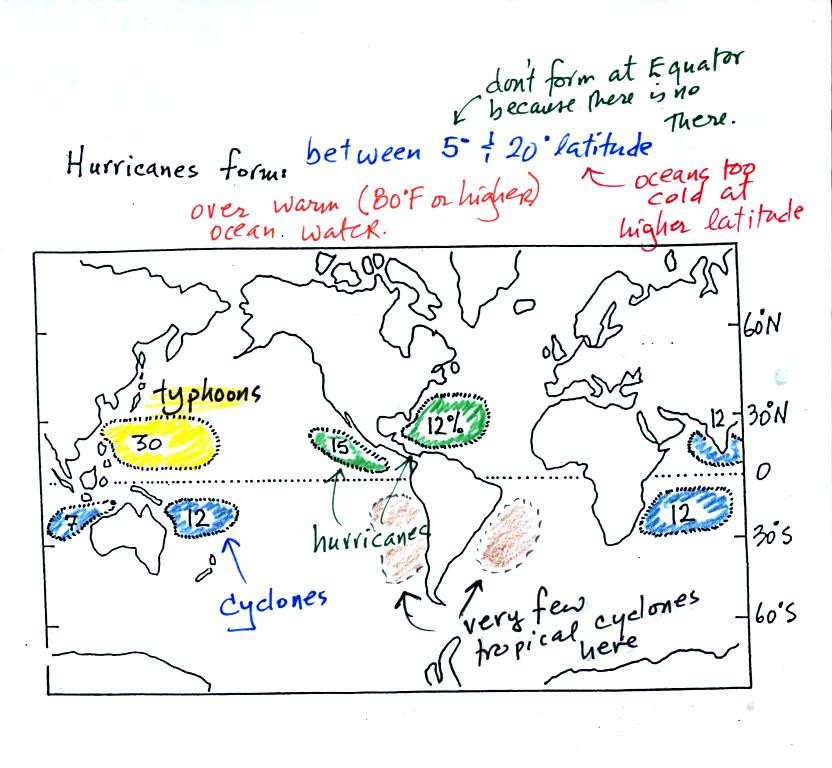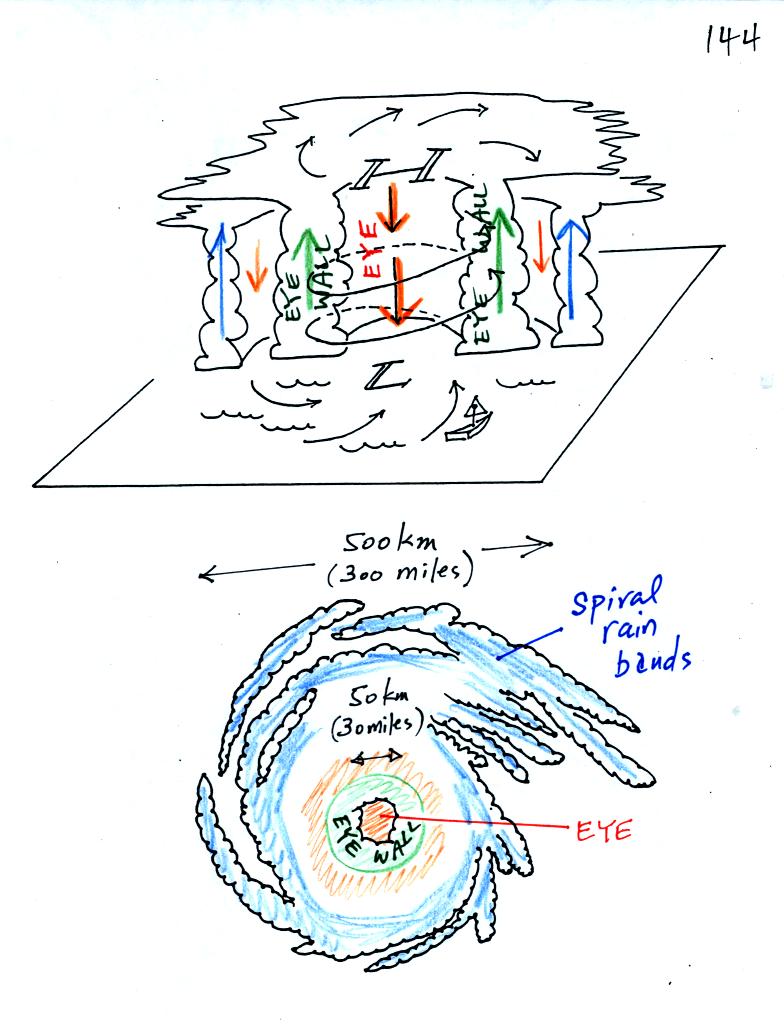
| Differences |
Similarities |
Differences |
| Found at middle latitudes (30 to
60 latitude) Can form over land or water |
The term cyclone refers to winds
spinning around low pressure, both storms have low pressure centers (the low pressure becomes high pressure at the top of a hurricane) |
Found in the tropics (5 to 20
latitude) Only form over warm ocean water |
| Movement is from west to east | Upper level divergence cause
lower the surface pressure and cause both types of storms to intensity |
Movement is from east to west |
| Warm and cold air masses brought together by converging winds | Warm moist air mass only | |
| Storm winds intensify with
altitude |
Storm winds weaken with altitude |
|
| Strongest storms usually occur
in the winter |
Strongest storms in the last summer to early fall |






